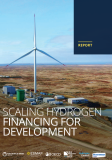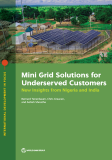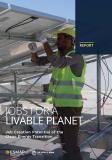Publications
META yields levelized costs for generation, transmission, and distribution for each electricity supply technology option from a relatively few input parameters. One of the features of META is that it allows for integration of environmental externalities, such as local pollution and greenhouse gas emissions. Users can easily see the cost of adding or expanding generation from a particular power source if, for example, a carbon price is factored in.
The META tool and underlying META report build on two earlier ESMAP flagship reports that covered competing generation options and their associated performance and costs: Technical and Economic Assessment of Off-Grid, Mini-Grid and Grid Electrification Technologies (December 2007) and Study of Equipment Prices in the Power Sector (December 2009).
META has been used in Dominica, Egypt, Macedonia, Morocco, Kosovo, and Vietnam as part of the World Bank’s engagement in these countries, and by other organizations in Haiti and Jamaica.
Going forward, ESMAP plans to regularly update the core cost data in the tool to take account of global trends and technological developments, and add in new features and data for other countries.
Download the META report and User Manual along with the META tool.




